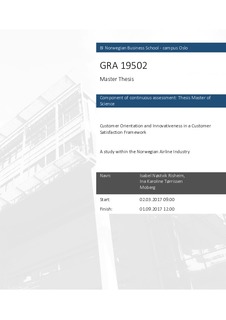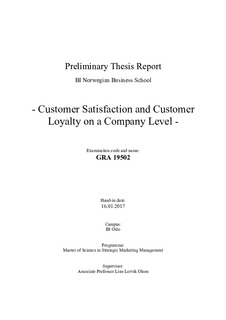| dc.description.abstract | Obtaining satisfied and loyal customers is essential for the success of any
business, and therefore it is crucial to continually develop a greater understanding
of what drives customer satisfaction and loyalty. Subsequently, a number of
national customer satisfaction indices have been introduced in the last decade.
However, because of the changing market conditions, it is important to learn,
adapt and improve these indices to be able to measure customer satisfaction in the
best way. Accordingly, this research has taken this matter into consideration, and
has included customer orientation and innovativeness to evaluate if the
consequences of these constructs lead to customer satisfaction and loyalty.
Additionally, the research also considers perceived price and quality as individual
variables for creating perceived value, it evaluates relative attractiveness within
the model, and appraises if customer loyalty can create engagement in social
media.
The empirical research has been conducted within the Norwegian airline industry,
with focus on the different competitive strategies of the chosen airlines to
investigate the relationship between the customers’ experience and the firm’s
implementation of these strategies. As the airline industry is a competitive
industry that changes rapidly, airlines should evolve their strategies around the
customers want and needs, and be innovative to get a competitive advantage and
outstanding business performance.
A conceptual model was synthesized with inspiration from the Norwegian
Customer Satisfaction Barometer. Then, Norwegian airline passengers was
surveyed about the effects within the framework, and their perceptions of the
airline. Further, Structural Equation Modeling techniques was used to analyze the
data and to answer our hypotheses. Overall, the study presents strong support for
the conceptual model and hypothesized paths, and thus adding some new angles
to the strategic service marketing literature. | nb_NO |

